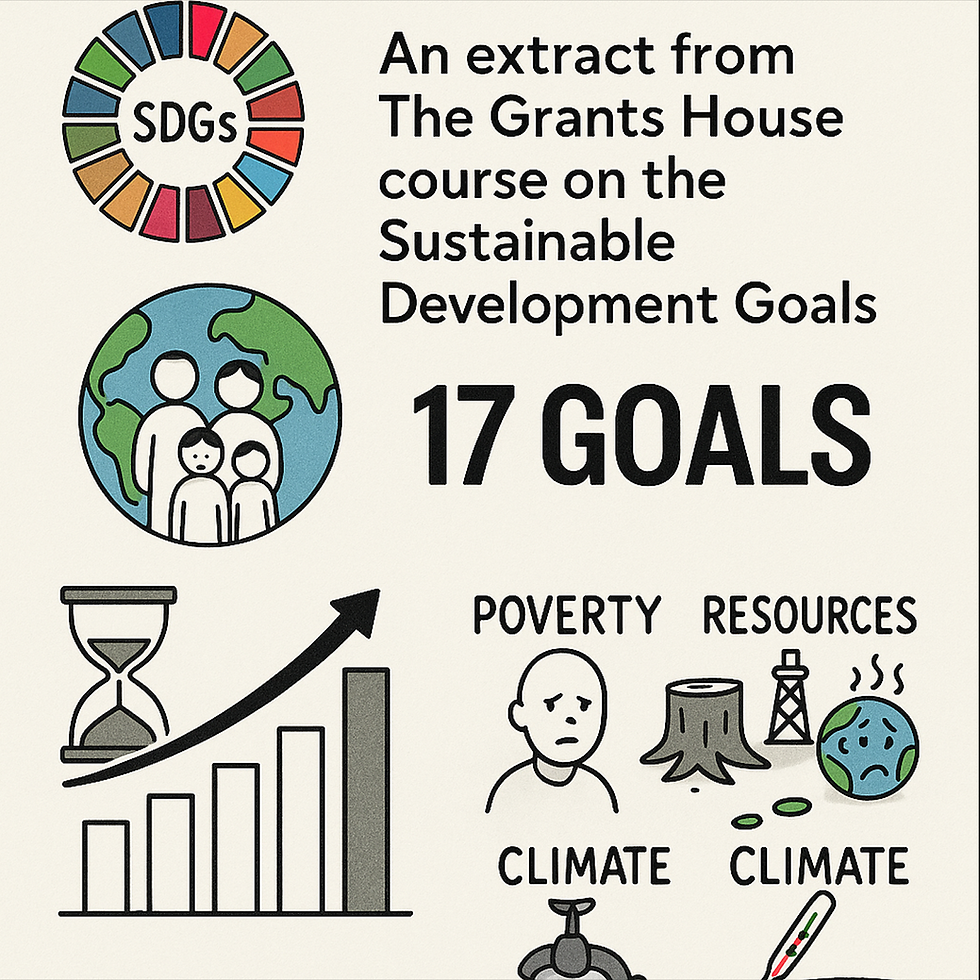Demystifying the Grant Cycle: Navigating from Idea to Financial Support
- Philip

- Mar 20
- 4 min read

Understanding the grant cycle is crucial for organizations and individuals looking for financial support for innovative ideas and projects. With billions of dollars in grants awarded each year—over $500 billion just in the U.S. alone—many institutions and initiatives can benefit tremendously from this funding. This guide unpacks the grant cycle, from idea generation to funding acquisition, helping you approach this path with assurance.
The Conceptualization Phase

Every successful grant application starts with a solid idea. This is the conceptualization phase, where you must define your project’s goals, objectives, and expected outcomes clearly. For example, if you're proposing a community garden project, your aim might be to enhance local food security, improve mental health through gardening, and strengthen community ties.
During this phase, conducting thorough preliminary research is vital. Identify existing studies or data that showcase the need for your project. For instance, research might reveal that neighborhoods with community gardens see a 25% increase in local produce access. This not only strengthens your proposal but also shows its significance to reviewers.
Researching Potential Funding Sources
Once your idea is polished, the next step is identifying potential funding sources. Explore various grant-making organizations, including government agencies like the National Institutes of Health, foundations such as the Bill & Melinda Gates Foundation, and corporate sponsors. Each funding source has unique priorities, eligibility requirements, and application processes.

Utilizing databases like Grants.gov or Devex can help you create a list of suitable grant opportunities. Aim to match your project’s objectives with funders' missions; for instance, a project focusing on environmental sustainability would align well with foundations that prioritize climate action.
Developing a Compelling Proposal

The proposal is your opportunity to explain your project’s purpose and why it deserves funding. A well-structured grant proposal typically includes several critical components, which we've covered in other blogs:
Executive Summary
The executive summary offers a concise overview of your project, including its objectives, the problem it addresses, and the desired outcomes. For example, if your project aims to promote literacy among children, summarize the methods you’ll use and the expected impact, such as a 15% increase in reading proficiency.
Development Challenge or Problem Statement
Use this section to convincingly present the need for your project. Support your claims with specific data and stories that highlight the urgency of the issue. For instance, cite statistics showing that 1 in 5 children struggles with reading, emphasizing the importance of your proposal.
Project Objective or The Solution
Describe how you plan to achieve your goals, including the timeline, methods, and activities involved. Specify details about the target population. For example, you might mention organizing weekly reading sessions for local kids aged 5 to 10, benefiting an estimated 100 children over one year.
Budget
A realistic and comprehensive budget can significantly influence your proposal’s success. Clearly outline how you will allocate funds and justify each expense. For example, if you're requesting $10,000, break it down into categories such as personnel costs, materials, and promotional expenses.
Note: For more details on developing a great proposal, go to The Grants House where we provide detailed advice on writing a Winning Proposal.
Collaboration and Partnership

Building partnerships can enhance your application. Collaborating with organizations that share similar goals can boost your project's credibility. For example, a literacy project might partner with local libraries and schools to increase reach and resources.
Identify potential partners early and discuss how you can work together to benefit the community. This collaborative spirit can lead to a stronger proposal and improve your chance of securing funding.
The Application Process
After finalizing your proposal, meticulously review each funder's application guidelines. Make sure you comply with all requirements, including formatting and submission deadlines.
Consider asking a colleague or mentor for feedback. A fresh perspective can unveil errors or areas for improvement that enhance your proposal’s clarity and impact.
The Review and Award Phase

Once your application is submitted, it enters the review phase. Reviewers will evaluate your proposal based on established criteria. Common assessment points include clarity, feasibility, significance, and whether your project aligns with the funder's priorities.
If your proposal is successful, you will receive an award notification. Pay attention to the grant's terms and conditions, as they specify how funds should be used and reported.
Post Award - Implementation and Reporting
Once you receive the funds, it’s time to put your project into action. Staying organized and following your timeline is crucial during implementation. Maintain regular communication with stakeholders and funders to keep everyone aligned.
Funders frequently require progress reports, which allow you to share updates on your project's achievements and challenges. Use these reports as an opportunity to highlight how the funds are making a difference.
Path to Realizing Your Vision

Navigating the grant cycle might feel overwhelming, but understanding each phase can greatly increase your chances of securing funding. From refining your idea to implementing your project, every step is essential in manifesting your vision.
With thorough research, a well-crafted proposal, and commitment to your project, you can turn your ideas into results. Persistence is key, and each application process is a valuable learning experience, regardless of the outcome.
As you embark on your grant-seeking journey, remember that success depends not just on the brilliance of your idea but also on how effectively you communicate and connect with potential funders. Equip yourself with knowledge, stay adaptable, and approach the grant cycle with self-assurance.

This blog is only a high-level view of the Grants Cycle and Proposal Writing. If you want more details, visit The Grants House and view our online courses to get a step-by-step guideline on developing your next Winning Proposal!
The Grants House





Comments